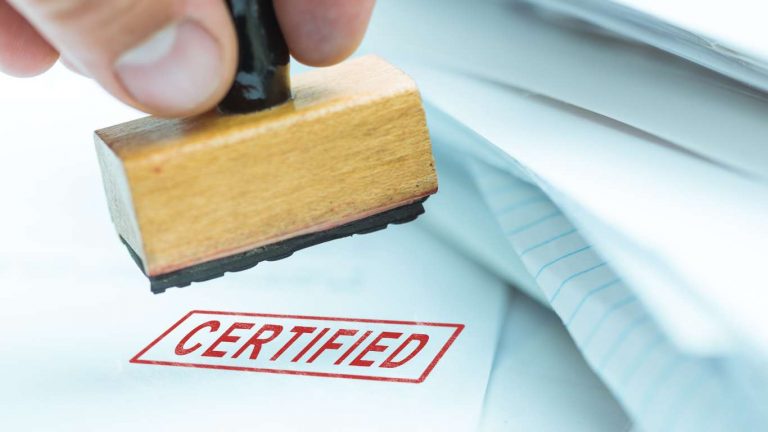When it comes to shipping hazardous materials, it is important to ensure that they are packaged and labelled correctly to prevent accidents and protect people and the environment. The United Nations (UN) has established a system for certifying packaging for the transportation of dangerous goods, which is essential for ensuring the safety of everyone involved in the shipping process.
What is UN Certification?
UN certification is a system established by the UN for the testing and certification of packaging used for the transportation of dangerous goods. The UN has developed a set of standards and guidelines for the design, construction, testing, and approval of packaging for hazardous materials.
These standards ensure that the packaging is strong enough to withstand the rigours of transportation and that it will not leak or rupture during transit.
Why is UN Certification Essential?
UN certification is essential for packaging hazardous materials because it ensures that the packaging is designed and tested to meet specific safety standards.
This means that the packaging such as UN certified boxes is strong enough to withstand the conditions it will be exposed to during transportation and that it will not leak or rupture during transit. Using UN-certified packaging ensures that your hazardous materials will be transported safely and that they will not cause harm to people or the environment.
In addition to ensuring the safety of people and the environment, UN certification is also important for compliance with international regulations. The International Air Transport Association (IATA) and the International Maritime Organization (IMO) require that all hazardous materials be shipped in UN-certified packaging. Failure to comply with these regulations can result in fines, legal action, and damage to your reputation.
Elements of the UN Packaging Code
The UN packaging code is a unique identification symbol that certifies that the packaging has passed all relevant UN testing and certifications. The code consists:
- Packaging type identification code
- Material of construction
- Packaging performance level
- Packing group
- Special packing provisions
Each section of the code provides important information about the packaging and the hazardous materials it contains. For example, the packaging type identification code indicates the type of packaging, such as a drum or a box.
The material of construction indicates what the packaging is made of, such as steel or plastic. The packaging performance level indicates the level of protection provided by the packaging, such as resistance to impact or vibration.
The packing group indicates the degree of hazard posed by the hazardous material, with Group I being the highest level of hazard and Group III being the lowest. Finally, the special packing provisions indicate any additional requirements for the packaging, such as temperature control or ventilation.
Benefits of UN Certification
The benefits of UN certification for packaging hazardous materials are numerous. First and foremost, UN certification ensures the safety of people and the environment by providing packaging that is strong enough to withstand the rigours of transportation and that will not leak or rupture during transit. This reduces the risk of accidents and helps to prevent damage to the environment.
In addition to safety, UN certification also provides compliance with international regulations. This helps to avoid fines, legal action, and damage to your reputation. UN certification also provides a competitive advantage by demonstrating a commitment to safety and environmental protection, which can help to attract and retain customers.
The Process of UN Certification
The process of UN certification involves several steps, including design, testing, and approval. The first step is to design the packaging to meet the UN standards and guidelines. This involves selecting the appropriate materials, design, and construction methods to ensure that the packaging is strong enough to withstand the rigours of transportation and that it will not leak or rupture during transit.
Once the packaging is designed, it must be tested to ensure that it meets the UN standards and guidelines. This involves subjecting the packaging to a series of tests to simulate the conditions it will be exposed to during transportation, such as impact, vibration, and temperature changes. The packaging must pass all of these tests to be approved for UN certification.
After the packaging has been tested and approved, it is assigned a UN packaging code, which indicates that it has passed all relevant UN testing and certifications. This code must be displayed on the packaging to indicate that it is safe for the transportation of hazardous materials.
Types of UN-Certified Packaging
There are several types of UN-certified packaging available, including drums, boxes, bags, and tanks. Each type of packaging is designed to meet specific UN standards and guidelines and is suitable for different types of hazardous materials.
For example, drums are suitable for liquids and solids, while UN certified boxes are suitable for solids. Bags are suitable for powders and granular materials, while tanks are suitable for liquids and gasses. It is important to select the appropriate type of packaging for your hazardous materials to ensure that they are transported safely.
Conclusion
In conclusion, UN certification is essential for packaging hazardous materials to ensure the safety of people and the environment, as well as compliance with international regulations. The process of UN certification involves several steps, including design, testing, and approval, and there are several types of UN-certified packaging available, each designed to meet specific UN standards and guidelines.
If you are shipping hazardous materials, it is important to use UN-certified packaging and to select the appropriate type of packaging for your materials to ensure their safe transportation.





